By Emilie de Haas
Hello again! I have been home in Canada for a few weeks now, and it has given me time to reflect on my experience in Peru this summer. I’ve recounted my story to several people over the past month, from family members to colleagues at school, emphasizing different details depending on the audience. Nevertheless, I always ended my tale with the same bottom line: my internship at the Institute for Democracy and Human Rights in Lima, Peru was a unique learning experience on many more fronts than I had envisioned, and allowed me to check off most of my anticipated goals on my pre-departure checklist.
Goal 1: Learn about the field of Human Rights
My first goal may have seemed like an obvious one. After all, the name of the internship program read human rights in big black letters. But prior to my departure, my conception of people working in the field of human rights was rather narrow. I saw human rights defenders as professionals and volunteers who advocated for the rights and needs of the people in search of a voice and recognition by working one on one or closely with victims, raising funds for awareness campaigns, joining forces in public demonstrations and lobbying, and the list goes on. Without a doubt, this facet of the fight for human rights is very real and consolidated efforts do yield lasting changes. However, in the weeks before I left, I couldn’t help but wonder how I was going to accomplish something worthwhile by doing research at a desk every day when so much needed to be done out there, in the field, close to the people who needed help the most.
I couldn’t have been more wrong.
A few weeks into my internship, I started to realize that there was another angle to human rights, of which I had been unaware but that was nevertheless an integral contributor to the advancement of human rights. Up to then, the plight of human rights violations had mostly been described to me as a struggle between civilians and the oppressing State. However, by the end of my time in Lima, I concluded that academia played an indispensable bridging role between victims, advocates and decision makers. Academia was the cog I had overlooked in the human rights wheel.
A few days before I left, I went to lunch with my supervisor and I asked her about her take on academia’s contributions to the field. Having dedicated her entire professional career to research, teaching and advising different branches of government on human rights issues (among many other things), I knew I could rely on her answer. She put it very simply: academia offered a safe, neutral and legitimate platform where human rights victims and defenders could dialogue directly or indirectly with policy makers and political leaders. In other words, academia was responsible for collecting impartial data on sight and transforming it into influential information taken into account by decision makers. Not to mention the ongoing debates between academics themselves, equally important to the exchange of ideas and dialogues on the topic. Lastly, she distinguished academia from the media and non-governmental organizations by emphasizing the importance of neutrality in the field.
That made sense to me.
After that lunch, I reflected on the work I had done up to that point and looked back on my previously narrow interpretation of the fight for human rights. I did not meet any victims of human rights violations this summer, nor did I go to court or organize awareness campaigns. But every morning when I arrived at the Institute and walked down the main hallway to my little office, I glanced at a row of famous wall photographs taken of innocent victims who had testified during Peru’s Truth and Reconciliation Commission over a decade ago. Each photograph was equally moving and tacitly provocative. The people in them may not have been physically present, but their images were a positive reminder of the purpose and importance of our work, and the overall contributions of academia to the field of human rights.
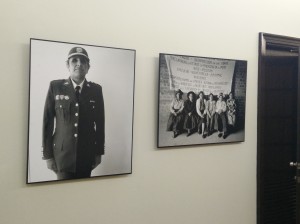
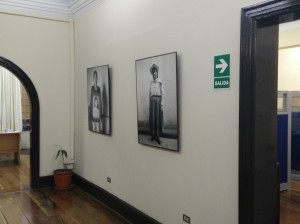
Goal 2: Get a feel for the culture and travel off the beaten path
I’d like to think that I successfully reached this goal, but that would be partially untrue. Peru’s culture is so diverse that it would take months, if not longer, to experience its richness to the fullest. The country is divided into twenty-four departments (similar to provinces or states) and is home to over fifty indigenous communities.[i] A tour guide once told me that Peru’s gastronomy is comprised of over a thousand varieties of potatoes, and that each region has a distinct way of integrating them into their local cuisine. Musicians in the Amazon prefer percussions, while Andean bands favour the traditional pan flute. All in all, it’s quite the picture.
Nevertheless, I did try to experience as many local customs and traditions as I could during my time in Peru. My most memorable experience was near the end of my internship, when I traveled to Lake Titicaca in the southeast region of the country. At nearly 4,000 meters in altitude, Titicaca is the highest navigable lake in the world and part of it belongs to the neighbouring country of Bolivia. It is home to the Uros, a native people, whose origins can be traced back to the Aymara civilization, existing around the same time as the Inca Empire and still well alive today. The Uros live in a community of floating reed islands they build themselves on Lake Titicaca. Each island can house up to three to four families living in tiny reed huts. Their lifestyle is still very traditional, despite a recent boom in tourism where visitors to the lake can briefly stop on one of the islands and learn about the community on site and buy local crafts.
I was lucky to find a local Uros family who offered homestays on their island to visiting foreigners. Within the twenty-four hours I spent with them, I went fishing with the father and his two sons, learned how to make jewellery out of straw, tasted quinoa soup for dinner and had quinoa bread for breakfast, had my hair braided into two long strands with colourful pompoms at the ends (the traditional fashion for unmarried girls in their culture), and had my breath taken away at the beauty of the lake beyond the islands.
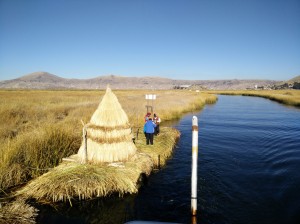
More importantly though, I saw how a little appreciation and interest for my host family’s customs and way of life could go a long way. Speaking for her community, my host mother mentioned that the Uros felt isolated and forgotten by their political far away in Lima, and that her people had learned to be autonomous and self-sufficient as a way to restore their dignity and keep their traditions alive. She said it made her community very happy to welcome foreigners into their every day lives. Yes, visitors did generate a new, modest source of income for these families. But beyond monetary concerns, the well-intended interest of outsiders is what helped drive the feeling of disconnection away and restore a sense of worth into the community.
The Uros people were by no means wealthy or modern according to their country’s standards, nor were they very concerned about altering their way of life to keep up with the trends. As a matter of fact, my host mother added that children of the Uros sometimes chose alternative lifestyles by moving and finding work on the mainland, but most of them chose to get married and continue living in the reed islands community. It struck me that for some minority communities, beyond material gains and influence, recognition, appreciation and respect where the foundational building blocks on which an entire people could live and push forward. After all, the guarantee of human dignity is the very first article in the Universal Declaration on Human Rights for a reason.[ii]
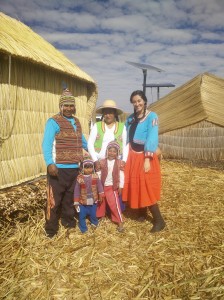
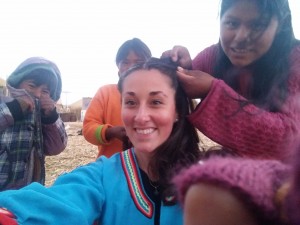
Goals 3, 4 and 5: Narrow in on my interests, create lasting connections and bring home a custom or two
Before this internship, I had an incomplete idea of the many avenues to explore within the field. From post-conflict resolution to disability rights, indigenous rights to business and human rights, the work can seem endless. At this point, I still have many classes to take and fields of law to discover, but I did narrow in on the topic of corporate accountability as particularly appealing to me, should I decide to pursue future studies in the field or try to combine it with another branch of the profession, such as international law.
The connections I created exceeded my highest hopes. It turns out that law students in Peru have very similar aspirations, experiences and characters, as well as a very fun side to them that make them so easy to relate to and have fun with! As for my superiors, I was lucky to work for such accomplished, inspiring people. From them, I learned that it was possible to have very successful careers in academia and in practice, while still maintaining a healthy work-life balance.
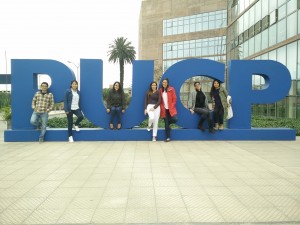
Finally, Peru is a country from which many lessons can be learned. The country has gone through turbulent episodes in history, and parts of it are a bit chaotic at times. Nevertheless, they are a very resilient nation. This was depicted in the relentless effort I witnessed from my colleagues at the Institute, as well as in the every day life I experienced outside of work. Despite the various obstacles that researchers in the field of human rights have to overcome in Peru, they still put their heads down and do it, simply because it has to be done. Their determination is remarkable, and I’d like to think that my lasting impression of this observation is what I am taking away from the experience and will hopefully be able to apply down the road.
